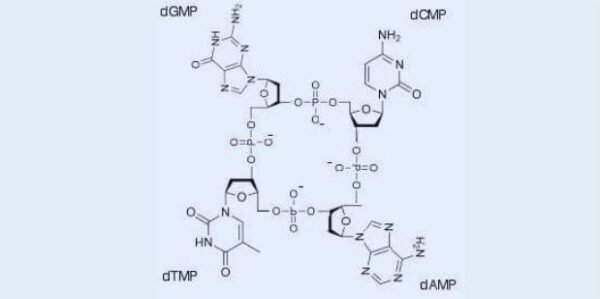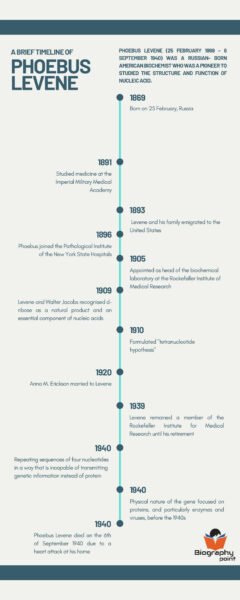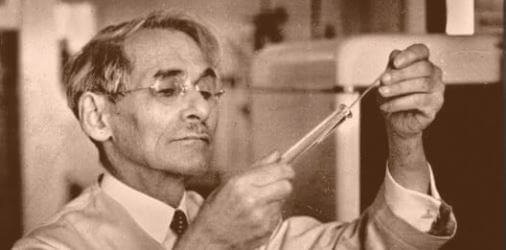Phoebus Levene (25 February 1869 – 6 September 1940) was a Russian- born American biochemist who was a pioneer to studied the structure and function of nucleic acid. Phoebus Levene’s full or original name was Fishel Aaronovich Levin and he was also called Phoebus Aaron Theodor Levene.
When Phoebus Levene worked with compounds, the most spectacular finding on that time was the isolation of sugars, 2-deoxyribose from the deoxyribonucleic acid (DNA) molecule and d-ribose from the ribonucleic acid (RNA) molecule that is considered the Levene most crucial contribution.
Phoebus Levene characterized the two different classes of nucleic acid, deoxyribonucleic acid (DNA) from ribonucleic acid (RNA), and also found that DNA contains phosphate group, deoxyribose, adenine, guanine, thymine and cytosine.
Early life and Education:
Phoebus Levene was born into a Lithuanian Jewish family in the town of Žagarė – a city located in northern Lithuania, Russia. Levene was the second of eight children born to Solom Michael Levene, a shirt maker, and the Etta (Brick) Levene. In 1873, when he was only two years old, his family migrated to St. Petersburg to enroll their children in private schools and the classical academy.
Phoebus was enrolled at the Imperial Military Medical Academy in St. Petersburg in 1886 where Borodin and his son–in–law Alexander Dianin taught chemistry. Levene was a brilliant student and due to that reason, his teachers were so impressed by Levene. They had given them the authority to allow him the laboratory freedom without any restrictions.
In this lab, he began research in organic chemistry on aldehyde and ketone condensation with phenols. At an early age, he inclined their interest in biochemistry. In 1891, Phoebus Levene’s family decided to migrate to America in search of broader prospects due to rising anti-Semitism in Russia. Levene’s family arrived in New York on the symbolic day of July 4, 1891. After he arrived in America, he practiced medicine on the Lower East Side in New York City.
Phoebus Levene was admitted as a special student at Columbia University, where he had given his time in research and medical practice in the department of physiology. In 1896, he joined the Pathological Institute of the New York State Hospitals as an associate in physiological chemistry. This time was hard for Levene because he contracted tuberculosis.
Saranac Lake was the place where he first interacted with Anna M. Erickson. Anna was born in Montana and married to Levene in 1920. Levene and Anna had no children. Phoebus Levene had a strong interest in modern art and literature, which was reflected in the design of their home. But even in a social situation, he kept his scientific pursuits at the forefront of all he did. His political beliefs were liberal; he favored the Kerensky administration, but he opposed the Bolsheviks.
The decision to leave medicine practice and dedicate his life to biochemical study when he was recovering from tuberculosis in Saranac Lake’s sanitarium. After that, he spent time at the Pathological Institute and Saranac Lake Laboratory to study tuberculosis, where he studied tuberculosis bacillus chemistry. While at Bern, Edmund Drechsel, Albrecht Kossel, and Emil Fischer were among the professors who taught him.
After studying nucleic acids at Marburg, he adapted Fischer’s novel ester fractionation process to explain gelatin amino acids in Berlin. In 1905, Simon Flexner founded the Rockefeller Institute for Medical Research who hired Levene to lead its biochemical investigations. He remained there until his retirement in 1939.
Phoebus Levene contribution to DNA:
Levene’s pioneering study on nucleic acids was particularly significant in his career. Although they were identified in 1871 and few knowledge was known about nucleic acid in 1900 other that they were found in nucleoproteins and had phosphoric acid groups connected with nitrogenous and non-nitrogenous substances. Levene demonstrated the occurrence of two distinct cell types.
One, readily produced from yeast, he demonstrated to be made of four nucleosides, one of which included the hitherto unknown sugar D–ribose. L–ribose, the optical isomer, had been synthesized lately in Europe and Levene demonstrated that his sugar was identical except for the direction of optical rotation. He also analyzed and synthesized hexose sugars, D–altrose and D–allose from D-ribose simple carbohydrate.
He later identified four nucleotides from the nucleic acid of yeast and found nitrogenous base, ribose and phosphoric acid in the DNA. Levene proved that nucleic acids are long-chain polymers made up of four monomeric nucleotides. As a result of his study, the nucleotide sequence, sugar ring structures, and the attachment positions of bases and phosphate units on sugars were all established in his lab.

As a proficient laboratory worker, Levene was an expert in utilizing scientific equipment with excellent efficiency. Animal studies were made much easier for him because of his background in medicine. Levene published over 700 scientific research papers that reveal his great interest and understanding in science. His scientific research demonstrates a thorough grasp of how to decipher the chemistry of biological processes.
During his early research, he was able to isolate certain kinds of proteins. Based on his analytical approach, Levene came to the conclusive point that the protein structure could be explained by classical valence theory based on his early work on the racemization of synthetic diketopiperazines. It took him a while to figure out how to use gelatin hydrolysate to get propylglycine anhydride, but he figured it out. It wasn’t long before his study on protein structure led to research on the non-protein components (lipoproteins, glycoproteins, and nucleoproteins) of conjugated proteins and thus nucleic acids, fatty acids, and sugars investigation.
Phoebus Levene Tetranucleotide Hypothesis:
According to the Levene tetranucleotide hypothesis, adenine (A), guanine (G), thymine (T) and cytosine (C) are the four nucleotides or bases are in equal composition that make up DNA the hereditary material. A commonly held belief prior to Erwin Chargaff’s discovery of the structure of DNA was that the repeating sequences of four nucleotides in a way that is incapable of transmitting genetic information instead of protein components of the chromosome.

Most genetic research before the 1940s relied on proteins, notably enzymes and viruses, as the foundation of heredity; this assumption was based on the chromosomes’ protein component. Levene’s hypothesis was rejected after the work of Erwin Chargaff.
Memberships and Awards:
Levene was an ingenious member of the National Academy of Sciences, the American Society of Biological Chemists, and several other American and foreign societies. He was nominated and earned the American Chemical Society’s Willard Gibbs Medal in 1931, and the New York section’s William H. Nichols Medal in 1938.
Phoebus Levene Death:
Phoebus Levene died on the 6th of September 1940 due to a heart attack at his home, 129 East Eighty-Second Street, New York, USA. At the time of his death, Levene age was seventy-one years old.


